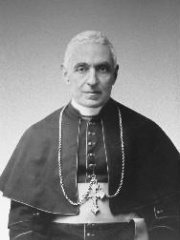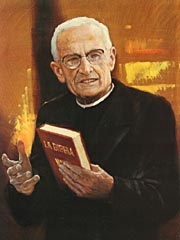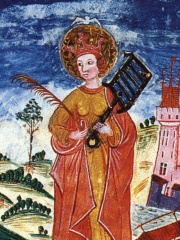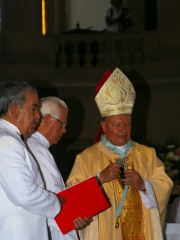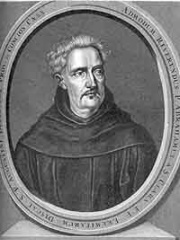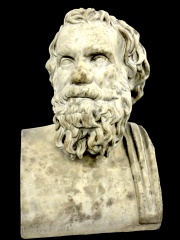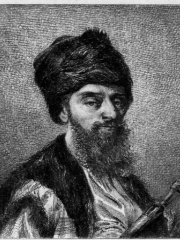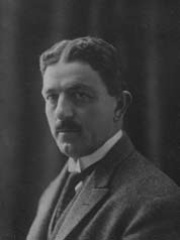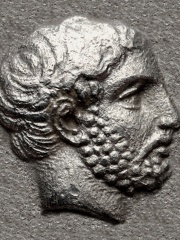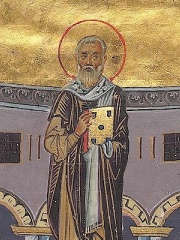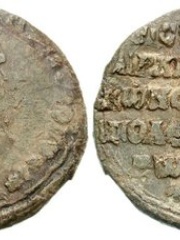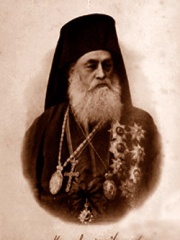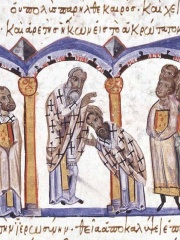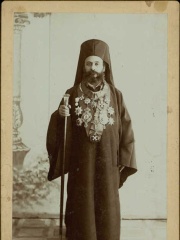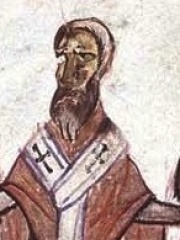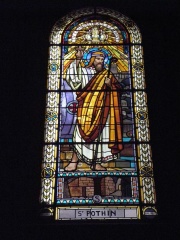Religious Figure
Polyeuctus of Constantinople
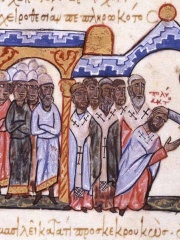
 Polyeuctus of Constantinople
Polyeuctus of Constantinople
Polyeuctus of Constantinople (Greek: Πολύευκτος; died 5 February 970) was Ecumenical Patriarch of Constantinople (956–970). His orthodox feast is on 5 February. Read more on Wikipedia
His biography is available in 20 different languages on Wikipedia (up from 19 in 2024). Polyeuctus of Constantinople is the 1,897th most popular religious figure (up from 2,148th in 2024), the 823rd most popular biography from Türkiye (up from 959th in 2019) and the 125th most popular Turkish Religious Figure.
Memorability Metrics
Page views of Polyeuctus of Constantinople by language
Among Religious Figures
Among religious figures, Polyeuctus of Constantinople ranks 1,897 out of 3,187. Before him are Giovanni Battista Scalabrini, James Alberione, John Gualbert, José de Jesús Pimiento Rodríguez, Giacomo Antonelli, and Al-Baqillani. After him are Saint Faith, Juan Sandoval Íñiguez, Anan ben David, Andrew Dũng-Lạc, Zerah, and Abraham a Sancta Clara.
Most Popular Religious Figures in Wikipedia
Go to all RankingsGiovanni Battista Scalabrini
1839 - 1905
HPI: 61.31
Rank: 1,891
James Alberione
1884 - 1971
HPI: 61.31
Rank: 1,892
John Gualbert
995 - 1073
HPI: 61.30
Rank: 1,893
José de Jesús Pimiento Rodríguez
1919 - 2019
HPI: 61.29
Rank: 1,894
Giacomo Antonelli
1806 - 1876
HPI: 61.28
Rank: 1,895
Al-Baqillani
950 - 1013
HPI: 61.28
Rank: 1,896
Polyeuctus of Constantinople
HPI: 61.27
Rank: 1,897
Saint Faith
290 - 303
HPI: 61.27
Rank: 1,898
Juan Sandoval Íñiguez
1933 - Present
HPI: 61.26
Rank: 1,899
Anan ben David
715 - 795
HPI: 61.26
Rank: 1,900
Andrew Dũng-Lạc
1795 - 1839
HPI: 61.25
Rank: 1,901
Zerah
HPI: 61.25
Rank: 1,902
Abraham a Sancta Clara
1644 - 1709
HPI: 61.25
Rank: 1,903
In Türkiye
Among people born in Türkiye, Polyeuctus of Constantinople ranks 823 out of 1,347. Before him are Nureddin Pasha (1873), John of Ephesus (507), Antimachus (-400), Constantine Ypsilantis (1760), Bryaxis (-400), and Beren Saat (1984). After him are Tuba Büyüküstün (1982), Rauf Orbay (1881), Sertab Erener (1964), Hecatomnus (-500), Cleostratus (-520), and Audoin (541).
Others born in Türkiye
Go to all RankingsNureddin Pasha
MILITARY PERSONNEL
1873 - 1932
HPI: 61.34
Rank: 817
John of Ephesus
WRITER
507 - 588
HPI: 61.32
Rank: 818
Antimachus
WRITER
400 BC - 348 BC
HPI: 61.32
Rank: 819
Constantine Ypsilantis
POLITICIAN
1760 - 1816
HPI: 61.32
Rank: 820
Bryaxis
SCULPTOR
400 BC - 360 BC
HPI: 61.30
Rank: 821
Beren Saat
ACTOR
1984 - Present
HPI: 61.28
Rank: 822
Polyeuctus of Constantinople
RELIGIOUS FIGURE
HPI: 61.27
Rank: 823
Tuba Büyüküstün
ACTOR
1982 - Present
HPI: 61.23
Rank: 824
Rauf Orbay
POLITICIAN
1881 - 1964
HPI: 61.19
Rank: 825
Sertab Erener
SINGER
1964 - Present
HPI: 61.14
Rank: 826
Hecatomnus
POLITICIAN
500 BC - 377 BC
HPI: 61.09
Rank: 827
Cleostratus
ASTRONOMER
520 BC - 432 BC
HPI: 61.07
Rank: 828
Audoin
POLITICIAN
541 - 560
HPI: 61.07
Rank: 829
Among Religious Figures In Türkiye
Among religious figures born in Türkiye, Polyeuctus of Constantinople ranks 125. Before him are Amphilochius of Iconium (339), Stephen II of Constantinople (850), Joachim III of Constantinople (1834), Euthymius I of Constantinople (834), Basil III of Constantinople (1846), and Athanasius I of Constantinople (1230). After him are Babylas of Antioch (238), Stephen I of Constantinople (867), Saint Domnius (300), Diodorus of Tarsus (400), Saint Pothinus (87), and Photius II of Constantinople (1874).
Amphilochius of Iconium
339 - 394
HPI: 62.22
Rank: 119
Stephen II of Constantinople
850 - 927
HPI: 62.20
Rank: 120
Joachim III of Constantinople
1834 - 1912
HPI: 61.93
Rank: 121
Euthymius I of Constantinople
834 - 917
HPI: 61.91
Rank: 122
Basil III of Constantinople
1846 - 1929
HPI: 61.81
Rank: 123
Athanasius I of Constantinople
1230 - 1310
HPI: 61.49
Rank: 124
Polyeuctus of Constantinople
HPI: 61.27
Rank: 125
Babylas of Antioch
238 - 251
HPI: 61.03
Rank: 126
Stephen I of Constantinople
867 - 893
HPI: 60.92
Rank: 127
Saint Domnius
300 - 304
HPI: 60.81
Rank: 128
Diodorus of Tarsus
400 - 394
HPI: 60.77
Rank: 129
Saint Pothinus
87 - 177
HPI: 60.61
Rank: 130
Photius II of Constantinople
1874 - 1935
HPI: 60.59
Rank: 131
